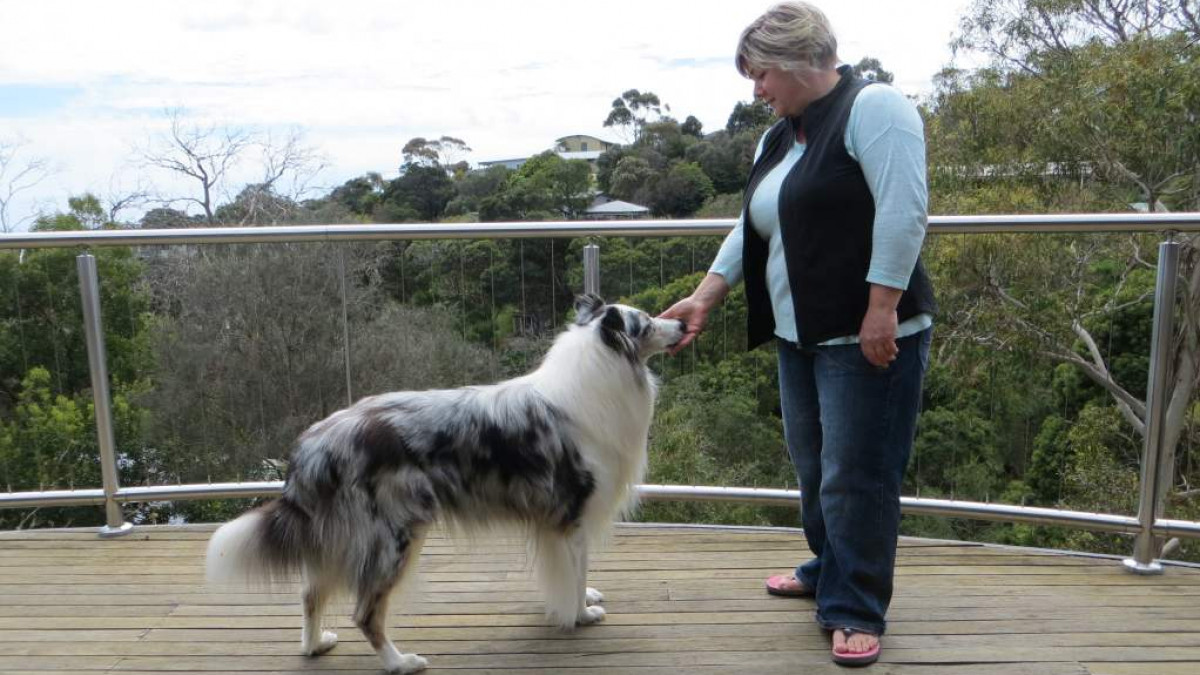For all the dogs who've touched our hearts
Dogs Mugs for Food? Here's What You Need to Know

Mugging for food can be a big problem when you start to train your dog. Stop mugging by learning one vital skill.

The power & problem of training with food
Dogs Love Food. That is why it is such a powerful reinforcer: they want it and we have it. What they do to get it is the basis of training using food.
The desire to have food may lead to demanding, biting and mugging. This can begin a battle between the trainer and the dog. The dog does what he knows to get the food, and the trainer does what she knows to stop the dog behaving this way.
An endless cycle of poor communication and frustration follows, created because neither knows what to do.

Leave it!... Is there a better way?
More and more owners are turning towards methods that create motivation and build confidence. Classes that teach using positive reinforcement are filling quickly. Beginner pet dog owners to more experienced trainers want enthusiastic learners with a library of behaviours built on trust and friendship.
To deal with the problem of food mugging there are a number of protocols designed around the misconception of teaching the dog “self” or “impulse” control. The dog is offered what it perceives as an opportunity to get food only to fail in its attempt. That failure is then reinforced with a click and food.
Is it best training practice to set our dogs up to fail in order to learn?


Our hands are a vital training tool, teaching clear "take food' cues is vital for trust and confidence.

Up to us
One of the most important things I have learned is that training outcomes, including failures, are my responsibility. As the teacher it is my job to set up learning that most clearly lays out the path to success.
What is missing in the self-control or Leave It protocols is an examination of our own skills. What are WE doing to cause our fingers to be bitten? How are we teaching, or what have we failed to teach that triggers our dogs to mug us for food? What do we need to understand and to do better?
Using food is a GREAT choice in training. Most dogs are highly motivated to work for it. On the surface it sounds easy: do a behaviour – give a piece of food, but the reality is that it takes skill to do it well.

Delivering the food well
Developing a clear, consistent and predictable food delivery pattern is the first step in the prevention of struggles with food. If the dog knows how and when the food will arrive, all he has to do is to wait for it. When Merlin was a pup this was one of the first skills I taught him and now, despite being a breed with a very long nose, he is the gentlest dog when taking food.


Advantages
Safety
For the Dog: No need to crane, twist, jump or grab to ensure he gets his prize. No accidental taste of finger!
For the Person: All digits remain intact!
Mutual respect
The food is presented in such a way that the dog can reach for and choose to take it. It is not shoved into his face or mouth but positioned at a comfortable height and distance for choice to be respected. Likewise the dog remains waiting for the delivery of the food without invading the trainer’s space. This is taught without encouraging the dog to fail or be punished.
When training or feeding multiple dogs, developing a clear delivery pattern helps to stop turmoil as each dog understands when it is their turn.
Effective training
The flow of training can progress smoothly allowing you both to concentrate on the lesson. The dog is free to think and therefore work out what you are asking him to do to earn the food. Behaviours progress quickly as more repetitions are possible. Time is used effectively and efficiently. Communication is clear and unambiguous, there is no confusion over the meaning of treats in hands.
Enjoyment and focus
Conflict is eliminated, and the dog can use his behaviour in the desired way to access the food. This allows training to flow smoothly creating a wonderful feeling of connection and two-way communication. Progress and enjoyment is shared by both.
When you understand how clear and effective placement of the reinforcer affects the behaviours you are teaching, a new world opens up. This can be in simple to very complex behaviours.


When you have multiple dogs, clear feeding cues are very important.
Next up:




BIG THANKS to Kay Laurence for her contributions to this article and for turning it into a Project, Training With Food on her website: Learning About Dogs
For a detailed exploration of “Leave it” please see:
Kay Laurence’s thought provoking article Just Cause it is Better than it Was
Eileen Anderson’s excellent analysis in: Leave it Not Just For Dead Men Anymore.

You might also like



Comments




Categories: : Dog training theory
Comments
Never miss a thing!

 Julie van Schie
Julie van Schie 



